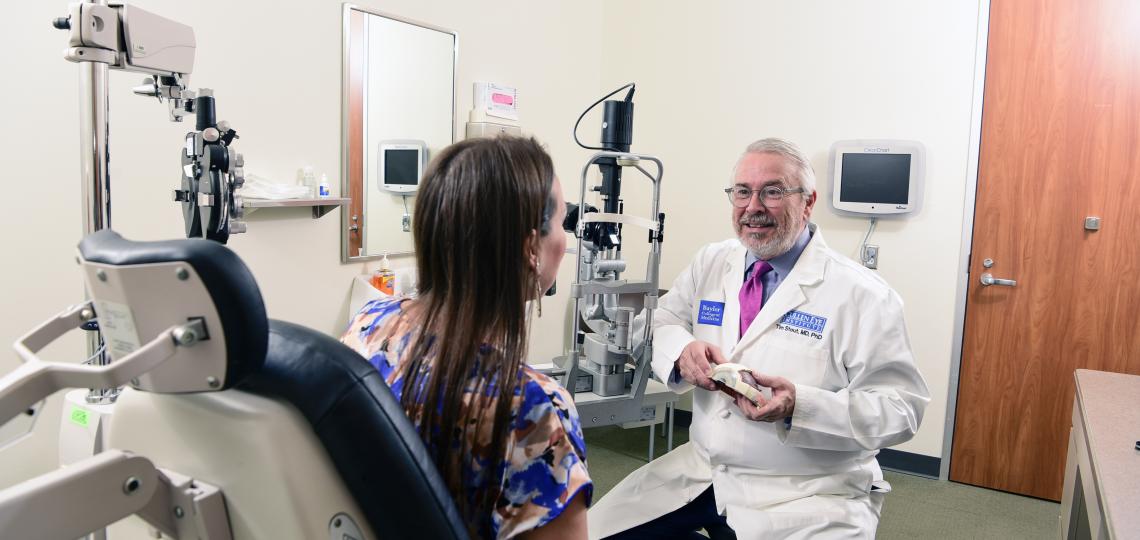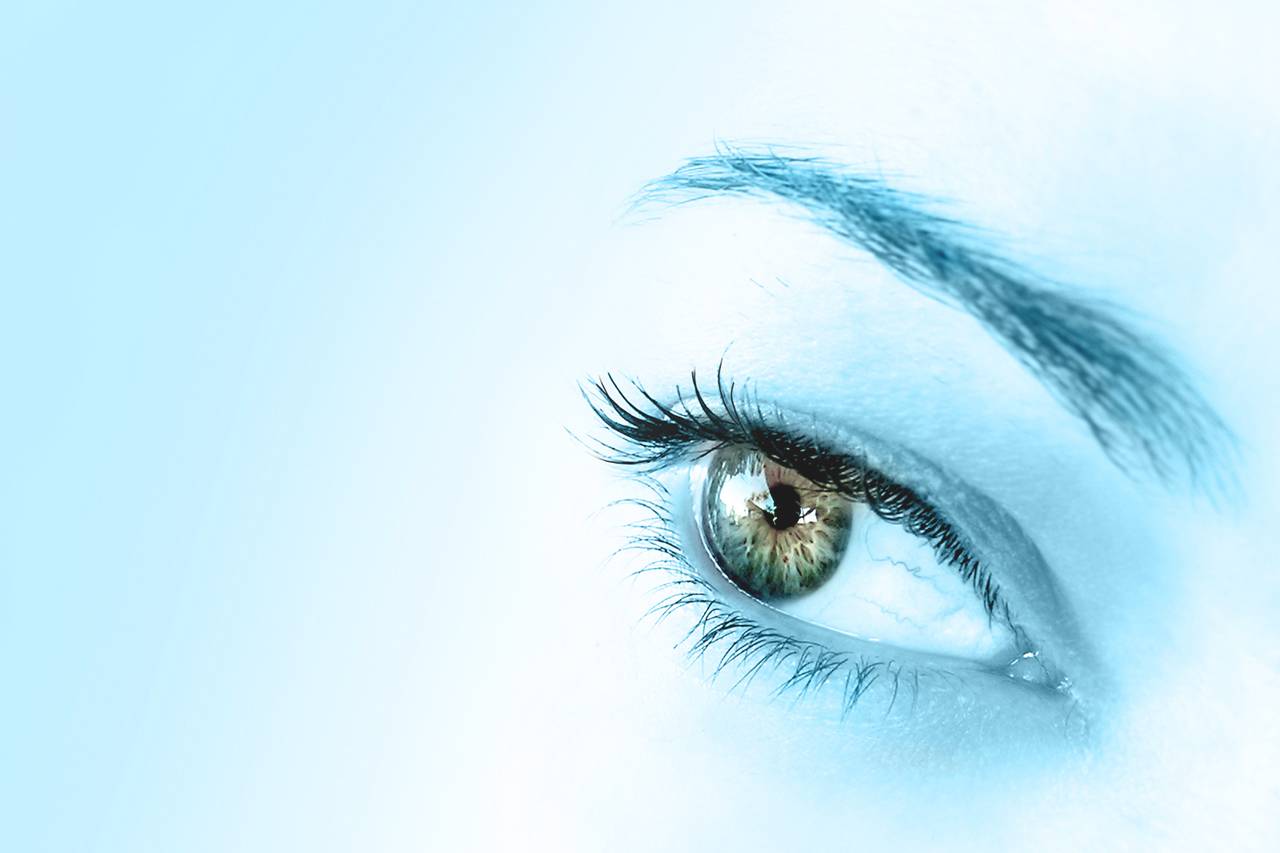Checking Out the State-of-the-Art Technologies Utilized for Dealing With and diagnosing Eye Problems
In the realm of ophthalmology, the evolution of modern technology has actually dramatically boosted the tools readily available for identifying and dealing with various eye problems. From advanced imaging innovations that supply detailed understandings right into eye structures to robotic-assisted surgeries that provide exceptional precision, the landscape of eye treatment is regularly advancing. With the integration of man-made knowledge in diagnostics, genetics therapy advancements, and virtual truth rehab, the opportunities for enhancing patient results are expanding at a rapid speed. The merging of these sophisticated innovations holds the assurance of transforming the area of ophthalmology, offering brand-new opportunities for personalized and efficient treatments.

Advanced Imaging Technologies
Advanced Imaging Technologies have actually reinvented the field of ophthalmology by supplying comprehensive and specific visualization of the eye frameworks. Optical Comprehensibility Tomography (OCT) sticks out as an essential modern technology in this realm. OCT makes use of light waves to capture high-resolution cross-sectional pictures of the retina, enabling the recognition of minute structural modifications. This non-invasive strategy aids in the very early detection and surveillance of various eye conditions such as macular deterioration, diabetic retinopathy, and glaucoma.
In Addition, Fundus Photography is one more crucial tool in sensory imaging. This method entails capturing thorough photos of the back of the eye, including the retina and optic disc. Fundus Digital photography aids in recording the progression of eye diseases, assessing treatment effectiveness, and enlightening individuals concerning their eye wellness.

Robotic-Assisted Surgery
Robotic-assisted surgeries have considerably advanced the abilities of ocular surgery, ushering in a new era of precision and effectiveness in treating different eye conditions. By integrating robotic innovation into surgeries, ophthalmologists can accomplish unmatched precision and control, bring about boosted person end results.
One of the main benefits of robotic-assisted surgery in ophthalmology is the enhanced dexterity and security it supplies to doctors. The robot arms can do exact motions with a high degree of precision, enabling delicate procedures with minimal invasiveness. This degree of accuracy is especially useful in surgical treatments involving the retina, where also small errors can have substantial effects for an individual's vision.
Additionally, robotic-assisted surgical systems provide real-time imaging and responses to the specialist, enabling them to make informed choices during the procedure. This modern technology improves the specialist's situational understanding and enables adjustments to be made without delay, making sure optimal outcomes for the client.
Artificial Intelligence in Diagnostics
With the advancement of advanced technologies improving surgical accuracy in ophthalmic procedures, the assimilation of Artificial Intelligence in diagnostics has become a pivotal growth transforming the area of eye care. Expert System (AI) formulas are being increasingly made use of to evaluate intricate data from imaging modern technologies like optical coherence tomography (OCT) and fundus digital photography to assist in the early discovery and accurate diagnosis of different eye problems. These AI systems can effectively recognize patterns and anomalies in pictures that might not be noticeable to the human eye, making it possible for quicker diagnosis and therapy preparation.
AI algorithms can likewise forecast disease progression, recommend individualized therapy strategies, and analyze the effectiveness of interventions. By streamlining the diagnostic process, AI not only improves the effectiveness of eye treatment specialists yet additionally boosts patient outcomes by enabling timely interventions. As AI remains to development, its function in diagnostics is anticipated to broaden, using brand-new opportunities for early intervention and customized treatment in the field of ophthalmology.
Gene Therapy Developments
In the realm of sensory developments, recent strides in gene treatment technologies have actually triggered considerable rate of interest among researchers and medical care specialists alike. Genetics treatment holds enormous pledge in transforming the treatment of various eye problems by targeting the underlying genetic causes. By presenting hereditary material right into cells to compensate for unusual genes or to supply an absent gene, genetics treatment uses a customized approach to dealing with inherited eye this disorders such as retinitis pigmentosa, Leber genetic amaurosis, and others that were previously considered untreatable.

As research study in gene therapy continues to breakthrough, the possibility for customized treatments for a bigger series of eye problems grows, providing new wish for individuals with genetic eye diseases.
Digital Truth Rehabilitation
Digital fact rehab has become an advanced method in enhancing the recuperation and rehab processes for people with different visual problems. glaucoma service near me. By replicating real-world environments via immersive innovation, virtual truth provides an one-of-a-kind system for vision therapy and rehab. This innovative approach enables people to engage in interactive workouts and activities created to improve aesthetic skill, depth assumption, eye control, and total visual performance
One key benefit of virtual truth recovery is its ability to tailor treatment programs based on the details needs and capacities of each patient. With real-time feedback and monitoring, medical care specialists can track progress, change treatments, and provide individualized like optimize results. In addition, online reality innovation can produce a secure and controlled room for people to practice visual tasks, get rid of obstacles, and build confidence in an online setup prior to transitioning to real-world circumstances.
Conclusion
In final thought, the innovations in imaging innovations, robotic-assisted surgical treatments, expert system diagnostics, genetics therapy innovations, and virtual truth rehab have substantially enhanced the medical diagnosis and therapy of eye problems. refractive surgeries in al. These advanced modern technologies have actually reinvented the area of ophthalmology, enabling for even more effective and accurate procedures. As technology continues to evolve, the future of eye treatment looks encouraging with the possibility for much more cutting-edge remedies to boost individual results
In the realm of ophthalmology, the evolution of modern technology has actually substantially improved the tools available for detecting and dealing with various eye problems. Fundus Photography helps in documenting the development of eye diseases, examining therapy efficacy, and informing clients about anchor their eye health.
Man-made click for more Intelligence (AI) algorithms are being significantly used to evaluate intricate information from imaging technologies like optical comprehensibility tomography (OCT) and fundus digital photography to aid in the very early detection and exact diagnosis of numerous eye conditions.In conclusion, the innovations in imaging innovations, robotic-assisted surgeries, fabricated knowledge diagnostics, gene treatment developments, and digital truth rehab have dramatically enhanced the medical diagnosis and treatment of eye problems. As technology proceeds to evolve, the future of eye treatment looks promising with the capacity for also more innovative options to improve individual outcomes.